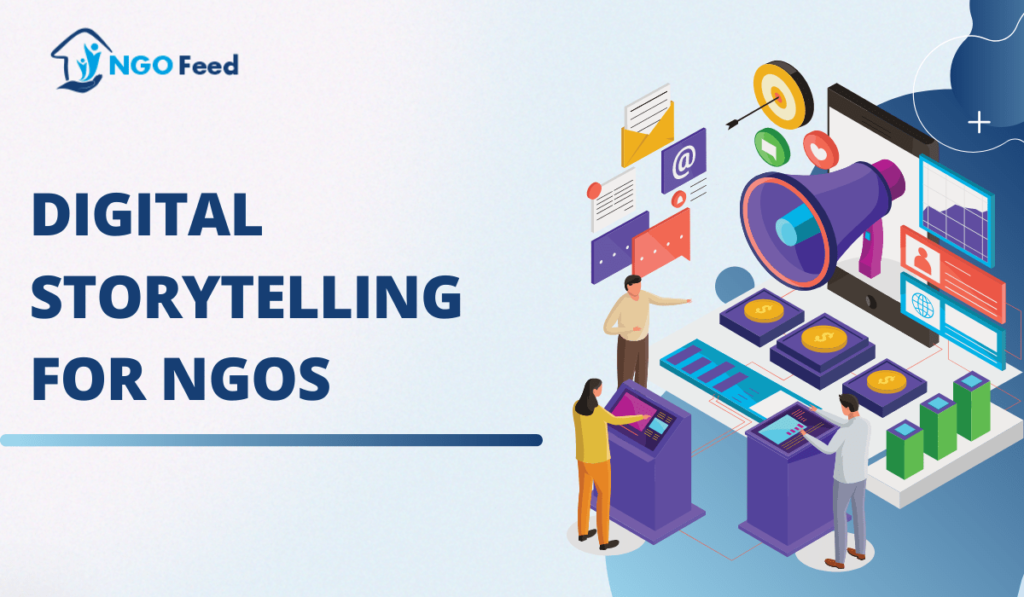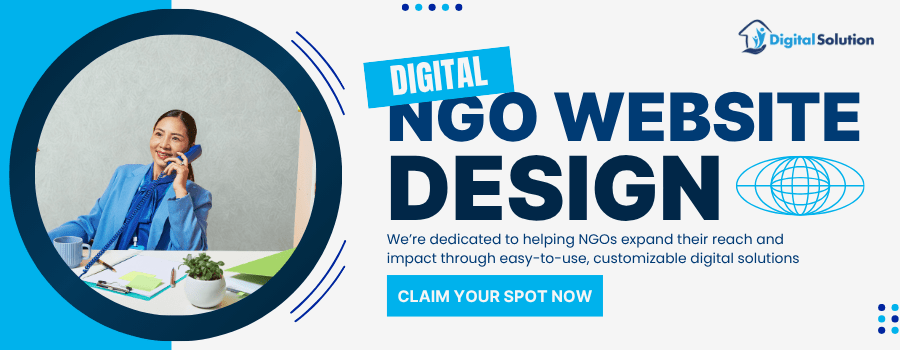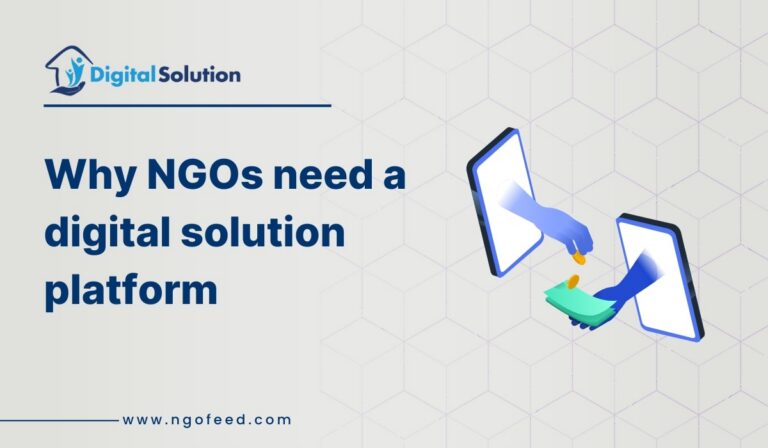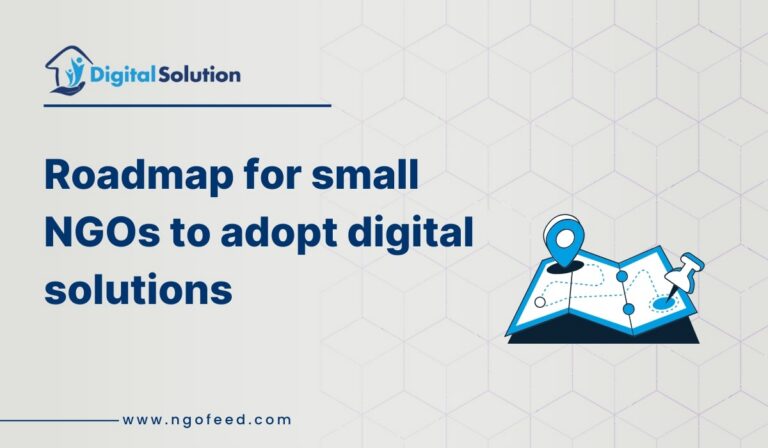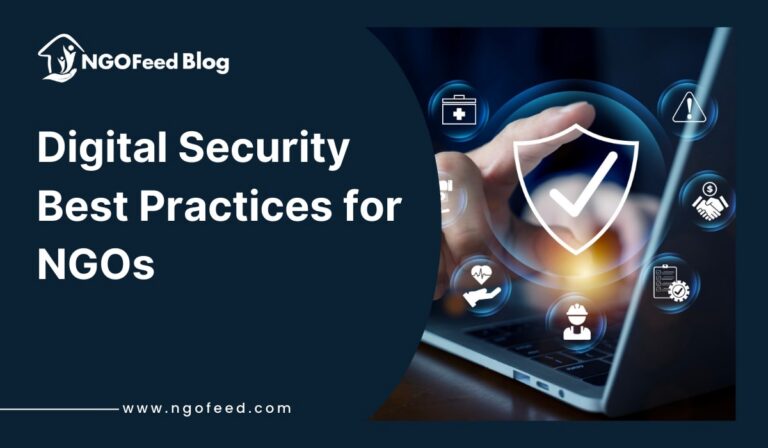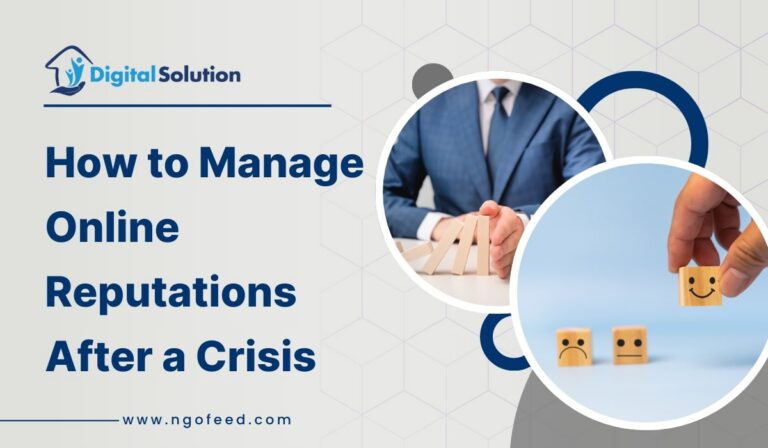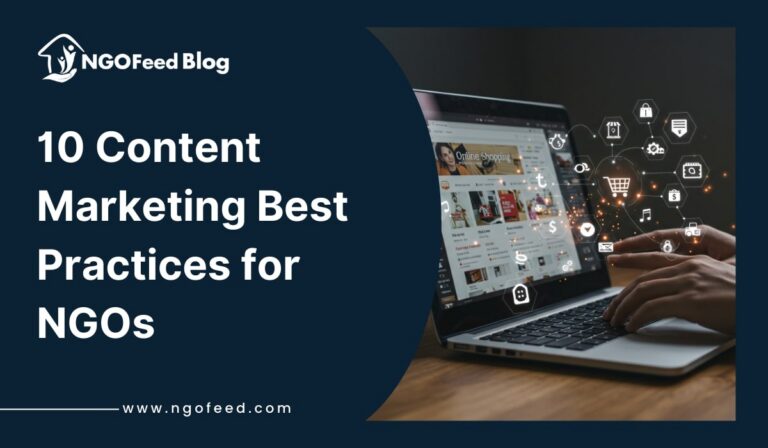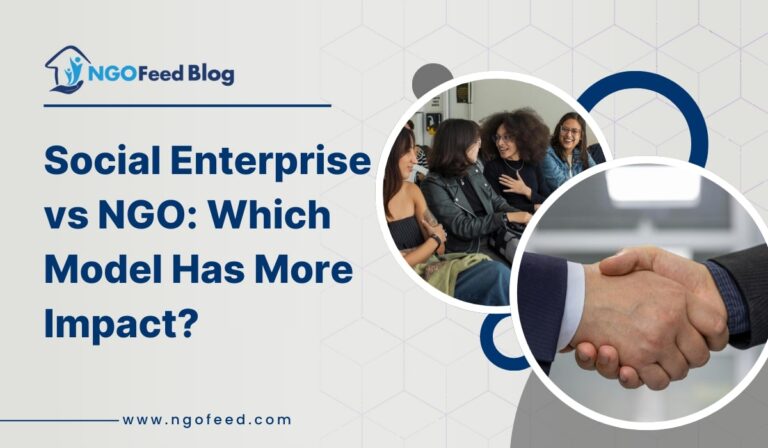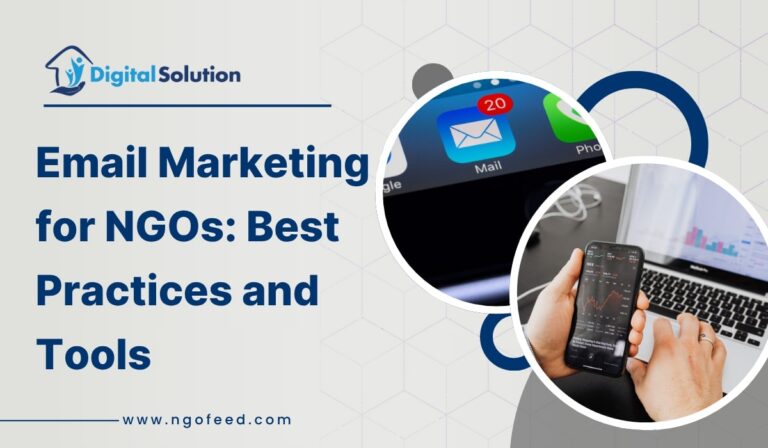Digital Storytelling for NGOs: In the digital age, storytelling is an effective tool that helps NGOs create social awareness, engage people, and increase their effect and outcomes. The ability to tell fascinating stories on multiple digital platforms is a chance for NGOs to tie the connection with the supporter beyond the intellectual level, trigger the emotional response, and motivate the change. This article will analyse the role of storytelling for NGOs and how digital platforms, especially, can help them lead a larger group of people and have a persistent impact.
Storytelling Power in NGO Communication
Storytelling has been part of human communication from the beginning of human beings. Tales are an extraordinary empire to stir up feelings, a vehicle to express complicated and spark-off movements.
NGOs not only use storytelling as a tool for sharing information but also try to create a story that their audience would feel connected to and eventually use for action. By illustrating the stories of individuals or groups that they are working with authentically, NGOs can give a human aspect to their initiatives, making them easy to understand and deeply touching.
Using firsthand stories, testimonies, and success cases will help the audience identify an individual’s emotional bond with the cause, making them more prone to doing anything, such as supporting and transmitting the NGO’s message.
Where to Post: Digital Platforms Harnessing for Storytelling
With today’s digital technology, NGOs are armed with numerous choices to reach a larger audience and share their stories that influence the world consciously. Let’s explore some key digital platforms and how NGOs can utilise for storytelling: Let’s explore some key digital platforms and how NGOs can utilise for storytelling:
1. Social Media
For non-governmental organisations, social media platforms like Facebook, Twitter, Instagram, and LinkedIn can serve as media channels, delivering the messages of the NGOs to a huge audience. The visual approach of telling stories through photographs and videos may become rather helpful for getting the audience’s attention and stimulating interest. A prolific communication involving sharing touching stories, up-to-date reports, and sneak peeks into the NGO’s work can help the NGO cultivate a devoted group of supporters.
2. Blogging
The NGO can follow the blogging trend on its website to tell stories behind the scenes. Blog posts can detail the issues the NGO encounters in the communities they serve, the progress they have made, and the role of their interventions in changing their lives for the better. Featuring photos and people’s recollections could add drama to the story’s plot.
3. Video Content
Thanks to YouTube or Vimeo video-sharing platforms, NGOs are able to utiliutiliseo and share content that is likely to touch people very deeply. Despite being documentaries, short films, or interviews, visual content can send powerful messages that audiences can relate to and be visually captivated. The video material is very much shareable and has the advantage of having the potential for viral reach.
4. Email Campaigns
Email continues to serve as a strong communication approach for NGOs. It is possible to use segmentation of email lists and exclusive storytelling content that speaks to each different donor group to build more personal relationships with the NGO’s supporters with the help of segmentation of email lists and exclusive storytelling content that caters to each different donor group. Using clickable CTAs (calls-to-action) along with them not only encourages recipients to engage but also increases the chances of receiving a response.
Crowdfunding Platforms
Narrative development is one of the key contributors in successful fundraising campaigns that take place on crowdfunding sites like Kickstarter and GoFundMe. Through NGOs, campaign narratives may be created and supported by images, pictures, posters, and videos, thus encouraging potential donors to donate.
The Most Important Components of Effective NGO Storytelling
Non-governmental organisations can produce powerful and effective storytelling content) via utilising the following strategic ideas:
1. Authenticity
Authenticity, along with storytelling, is a must for NGOs. Authentic narratives that showcase the real results of the organisation’s work organisations leave an audience emotionally impacted. The portrayal of real stories and images enhances transparency and accountability.
2. Clear Message
The storytelling should have one focused message, which should be concise and clear. It could be a single event about a certain project, it could be about a success story, or it could be an emergent situation that calls for urgent action. Whether it is one or all of the above, the message should be structured in a manner that is easily comprehensible and memorable.
3. Visual Appeal
It is thus very advisable to include visually appealing features such as photos, infographics, and videos in the storytelling, and the chances for its success will rise by 50% at least. Visuals can often do this by communicating emotions, which will, in effect, improve comprehension among the target audience.
4. Empathy and Emotion
One interesting thing about NGO storytelling is that it relies heavily on emotions to facilitate empathy. By their appeals to people’s natural compassion or sense of hope and inspiration, NGOs can inspire their audience to join in their efforts.
5. Impact Highlighting
Pointing out people’s tendencies will help understand the meaning of the NGO’s initiatives. Data, particularly numbers such as lives affected, communities transformed, or milestones reached, make quantifiable aspects of the organisation’s work.
Measuring Impact and Success
Although influenceable storytelling represents one of the key strategies in NGOs, the capacity to measure their effectiveness is the other important thing for NGOs to achieve their purpose. Digital platforms give NGOs precious insights on analytics and metrics that will help them measure the extent to which they have been successful in their storytelling initiative.
1. Social Media Insights
Social media sites give a look at the audience interaction, reach and reaction towards the posts. Follow Us On YouTube. In addition, social media offers a way for brands to gather customer feedback and engage in dialogue with their audience. Consumers can leave comments, ask questions, and even share their experiences with the brand through social media posts. User-generated content can provide valuable insights into consumer preferences, sentiment, and product or service improvements. NGOs can measure which stories thrill their audience the most and which posts attract the most followers.
2. Website Analytics
It might give some insights to a content creator about which blog post or page gets the most views, which one takes a longer time to get read, and which has a higher conversion rate. Using this data, we can establish the kinds of narratives that strongly impact.
3. Email Campaign Metrics
By following email campaign metrics like opens and clicks, we can determine what storytelling stories work best and which aren’t very popular.
Crowdfunding Campaign Performance
From the NGOs conducting crowdfunding campaigns, tracking the campaign’s progress and conversion rates will indicate the extent of the storytelling role that enhances fundraising efficiency.
NGOFeed’s Success Stories Campaign
NGO Success Story: Are you an NGO (Non-Governmental Organization) doing lots of work for our society in several fields, like providing education to low-income families, helping all the needy people in health care, consumer protection, human rights, health, environment, or social development? After all this trouble and all this hard work for our society. If you are an NGO interested in sharing your success stories, you can participate in our “#shareyourstories” campaign. This campaign allows any NGO or NPO to share their success stories on our portal and reach a wider audience in India and globally, free of cost. Yes, you heard that right – it’s completely free of charge!
Conclusion
In the end, storytelling is a strong medium that can help and enable NGOs to inform the public, seek supporters and conduct the process of change effectively. Through technology, NGOs can now overcome the exclusionary and geographic barriers that have always existed, become more visible on the digital scene, create an emotional engagement with their sponsors and stakeholders, and mobilise for action like never before.
To generate compelling content, being authentic, transparent, attractive, and empathetic and making a real difference should be the main factors. Measuring their outreach and accomplishments gives them an edge over other visual artists. NGOs may be able to achieve their goals most effectively and fairly by frequently updating their strategies.
The essence of compelling storytelling gets more action, and a longer and more lasting impact is created. This can be reached with storytelling skills and powerful digital platforms. More people will connect with these noble causes and share them. Then, you should understand the narrative technique, make friends with digital, and achieve the goal!

